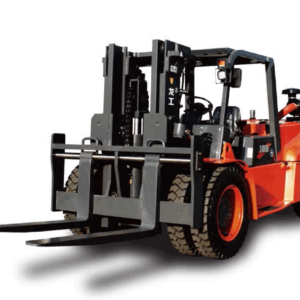
Efficiency remains fundamental for continued success and an upper hand in the fast-evolving Malaysian industrial landscape. The swift transfer of products, from warehousing and overland transportation to construction and manufacturing, is the cornerstone of prosperity. To that end, choosing the the right equipment from the forklift for sales is vital to the efforts of your business. There are so many options on the market that we can get lost in them.
However, with the following information and tips, you can land the perfect for when you are looking for forklift for sales, and looking for some extra discounts.
Knowing Your Business Requirements:
A business must first understand what they need to choose the best forklift. The part in which you should consider the operations, materials that will be handled, space where it will be used and the frequency with which it will be used. A business dealing with heavy-duty materials needs forklifts of higher load capacities and stronger constructions. In contrast, companies and warehouses with narrow aisles would want their forklifts to be more compact and maneuverable.
Evaluating terrain and environment:
The different terrain and climatic situations in Malaysia require forklifts to come with interchangeable options. Suppose your operations and functions pass through smooth warehouse floors, harsh construction sites, or hazardous outdoor environments. In that case, it is paramount that you consider the tires, suspension, and weatherproofing of the lifted device. Allowing for changes in elevation, irregular ground surfaces, and exposure to moisture or dust will also need to be factored into delivering your equipment and for the maintenance and longevity of your equipment.
Types of Forklifts:
One thing to note is that there are different configurations depending on the type of forklift and its uses. Common types include:
- Counterbalance Forklifts: These work well for general material handling work and have the load lifted at the front of the machine counterbalanced by a weight at the rear of a type of counterbalance forklift.
- Reach Trucks: This equipment type is ideal for high-rise warehousing, allowing your crew to stack products to the ceiling with their extending mast and forks.
- Pallet Jacks: These have other names, like pallet trucks or pump trucks, which are ideal for transporting palletized manners over short distances and easy maneuvering in tight areas.
- Rough Terrain Forklifts: Designed for use outdoors on rough terrains, rough terrain forklifts have stronger tires, higher ground clearance, and a more stable base, making them tough enough to tackle more challenging terrains.
Power Source:
Another important choice to make is the power source for your forklift. Electric, diesel, and LPG (liquefied petroleum gas) are some of the common choices. Both come with their own pros and at the same time, it is not suitable everywhere (Environment, exhaust gas level, operating costs, maintenance, etc.). Electric forklifts, for instance, have no emissions, less noise, and cheaper lifetime costs but need recharging infrastructure and have less outdoor capability.
Safety Features:
Safety is a priority when looking for forklift for sales. This could be stability-enhancing systems, ergonomics, operator training programs, etc., and compliance with safety standards and regulations. By adopting sophisticated safety technologies such as proximity sensors, camera systems, and automatic braking systems, you will reduce the risk of accidents even further, and this will contribute to the safety of your employees at work.
Cost Considerations:
It is important to consider the total cost of ownership over the life of the forklift, though upfront costs are a major driver. These include fixed costs, fuel or electricity, depreciation, and downtime for repairs or maintenance. Quality equipment from established quality brands results in a larger initial outlay, but this lowers long-term operational costs through improved gains and efficiency along with lower operational downtimes.
Load Capacity and Lift Height
- Load Capacity: Regarding electric hoist motors, you should only have a clear idea of your lifting capacity requirements. Unsafe application, don’t go over the load capacity of a forklift: Overloading is the most likely cause of equipment harm and injuries.
- Lift Height: The forklift should be capable of reaching the highest storage racking or loading docks in your facility without becoming unstable.
Comfort and Ergonomics for the Operator
- Ergonomics: Choose features like an adjustable seat, simple controls, and high visibility to ensure your operators are comfortable and reduce fatigue from driving the forklift.
- Cabin Environment: Cabins featuring air conditioning or ventilation are a must for outdoor or warmer climate use, making the ride much more comfortable.
Technological Advancements
- Telematics: Current forklifts are often equipped with telematics, which is real-time data on usage, maintenance needs, and performance, which allows for better inventory management.
- Automation and AI: Business changes remove the need for a redundant workforce, with workers left in place, instead, they are more productive, less of a bottleneck. Semi-automated or perhaps fully automated forklifts operating with little need for human intervention (perfect for high volume, repetitive tasks.
Choosing a Reliable Supplier:
Additionally, contracting with a respected forklift dealer makes procuring the machinery more manageable, especially since there is ongoing service assistance available. Seek established vendors with a full product catalog, service, and parts operation, as well as a sales team that has been educated on the challenges of conveyor & robotics products community-wide. Having a strong partnership with your supplier will help you receive continuous care and have access to spare parts, operator training, and technical support to keep your fleet going strong throughout its lifetime.
Conclusion:
To sum up, taking into account operation requirements, environmental conditions, the models of the forklift you want, power sources, safety features, costs, and supplier qualifications, you can select the best forklift for sales in Malaysia that suits the business the most. Complete your due diligence, speak with experts, and make a quality decision that helps your business to be more effective and driven.



